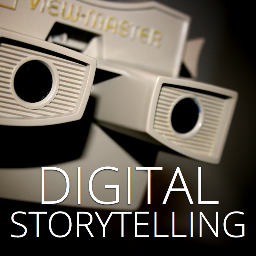Charity Clarity: How Can The Smallest Charity Be Effective with Telling Their Story?
October 11, 2013
3 min read
 Last week, I had the good fortune of participating in the Digital Storytelling Conference. And I was honoured when asked to facilitate the Charity Luncheon beforehand. There were so many great questions that came up over our sandwiches, that I wanted to share them here. More so, I wanted to harness the power of community to find the answers and so, I went out and asked some colleagues and peers to help add a multidimensional layer to these questions.
Last week, I had the good fortune of participating in the Digital Storytelling Conference. And I was honoured when asked to facilitate the Charity Luncheon beforehand. There were so many great questions that came up over our sandwiches, that I wanted to share them here. More so, I wanted to harness the power of community to find the answers and so, I went out and asked some colleagues and peers to help add a multidimensional layer to these questions.
We’ll be posting the answers one by one over the next couple of weeks, so stay tuned!
How can the smallest charity be effective with telling their story?
Joel Bentley (Peer Giving): If you’re a small charity, you need to focus on a single story and tell that story really well. If you can distill your message down into a single sentence then you’ll have a much easier time communicating it than if you need to walk people through a 15-minute PowerPoint presentation in order to understand what you do.
Dee Keilholz (Charity Express) It’s crucial for charities — small and large — to hone in on their message. Many clients we work with come to us with either a very broad message (We want to end loneliness! We want to save the world!) or a scattered message (We think education is the most important thing in the world… and hunger, and trafficking, and micro loan programs).
It’s important that your supporters understand at one glance a) What problem your charity tries to solve and b) What sets you apart from other charities addressing a similar or the same problem.
In order to achieve clarity on your company’s story, narrow down focus, and get your staff aligned on messaging, here’s what I suggest:
1. Listen to your supporters/donors and figure out what they find most compelling.
2. Monitor & measure! You don’t have to spend a lot of time or money on elaborate research, but it’s important that you let data inform you what works with your donors and what doesn’t. Monitor click rates and opening rates when sending out e-newsletters and asks. Monitor which mailouts yield the best results.
3. Craft a minimal messaging guide! Again, you don’t have to spend a lot of money and time on this, but it’s important that — once you have some clarity on what your main story is — put it down in writing, as a reference and to keep you and your staff, volunteers etc. aligned.
Your messaging guide should outline:
-What is our main story?
-How do we communicate this story?
-How do we NOT communicate?
-Who is our main audience?
